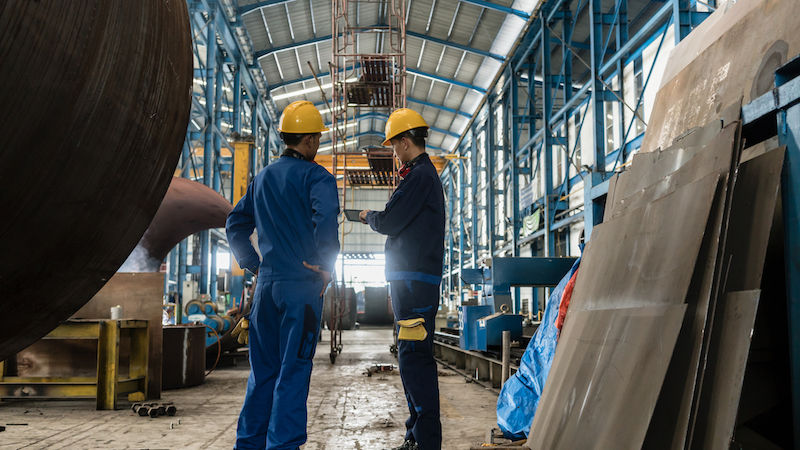Essential in the building sector and greatly influencing the stability and safety of infrastructure and structures, structural steel manufacturing. Though it is typically buried behind walls and ceilings, structural steel fabricators’ work, from bridges to skyscrapers, is crucial to the integrity of these buildings. This blog post will discuss the significant roles structural steel fabricators play, their methods of operation, and the reasons their work is so vital to building projects.
Understanding Structural Steel Fabrication
Structural steel fabrication is the production of building-use steel components. These parts are produced under controlled conditions, which makes quality assurance and accuracy possible before they are delivered to the building site. To satisfy certain design criteria, the fabrication process consists of multiple phases, including cutting, welding, assembling, and finishing steel parts.
The Importance of Structural Steel
In building, steel’s strength, adaptability, and lifespan make it preferred. Its high strength-to-weight ratio helps buildings to stay lightweight while nevertheless bearing large loads. High-rise buildings and large-span constructions like bridges especially benefit from this feature. Furthermore, recyclable steel qualifies as a green substitute for modern buildings.
Key Responsibilities of Structural Steel Fabricators

Throughout the building process, structural steel fabricators handle several duties. Here’s a closer look at their key functions:
1. Design Interpretation
Working together with engineers and architects, fabricators interpret design blueprints. Making sure the created components satisfy the required criteria depends on knowing the specifications and needs of a project. This collaborative process helps to identify potential challenges early on, allowing for adjustments before fabrication begins.
2. Material Selection
Any project depends on the proper kind of steel chosen. Fabricators evaluate the particular requirements of the construction, taking into account load criteria, environmental conditions, and aesthetic tastes. They often work with different grades of steel, each offering unique properties suited for various applications.
3. Precision Cutting and Shaping
Once the materials are selected, fabricators use advanced machinery to cut and shape the steel components. Since any errors could compromise the integrity of the finished construction, this process calls for knowledge and accuracy. To get exact proportions, one often uses shears, saws, and plasma cutters.
4. Welding and Assembly
Larger components are formed from the constituent sections soldered together following cutting. Depending on the project demand, fabricators use MIG, TIG, and stick welding, among other welding methods. The assembling of these parts is a crucial stage requiring a great degree of expertise to guarantee structural integrity.
5. Finishing Touches
Finishing techniques are used to guard the steel from corrosion and improve its look once construction is finished. This can call for galvanising, painting, or using other protective coatings. Not only does a well-finished steel component look better, but it also lasts longer, therefore lowering future maintenance expenses.

Quality Control in Fabrication
The foundation of structural steel construction is quality control. Using strict testing and inspection procedures, fabricators make sure every component satisfies project criteria and industry standards. These covers looking at welds, measuring distances, and running load tests. Strict quality control policies assist fabricators in reducing risks and guaranteeing the safety of the completed construction.
The Role of Technology in Steel Fabrication
The structural steel fabrication sector has embraced technical developments that improve accuracy and efficiency. Fabricators can build exact 3D models of components using computer-aided design (CAD) tools, therefore improving planning and lowering errors. Moreover, automated cutting and welding methods raise production while preserving high standards of quality.
Benefits of Hiring Professional Fabricators
Engaging professional structural steel fabricators offers numerous benefits:
Expertise:
Skilled fabricators provide years of technical expertise and experience to every project, therefore guaranteeing that components are created with accuracy.
Time Efficiency:
Professional fabricators can expedite the process and provide premium components on schedule and at an underpriced price.
Safety Assurance:
Following industry standards and carrying out extensive inspections helps fabricators reduce structural failure-related hazards.
Conclusion
Ensuring our bridges and buildings are safe and robust depends mostly on structural steel fabricators. They carefully design, cut, and assemble steel parts to meet specific needs. Austeel Australia offers expert fabrication services that ensure high-quality structures for various projects. Working with knowledgeable fabricators will help you be sure your building will last. If you are organising a project for optimum outcomes, think about consulting structural steel fabrication experts.






